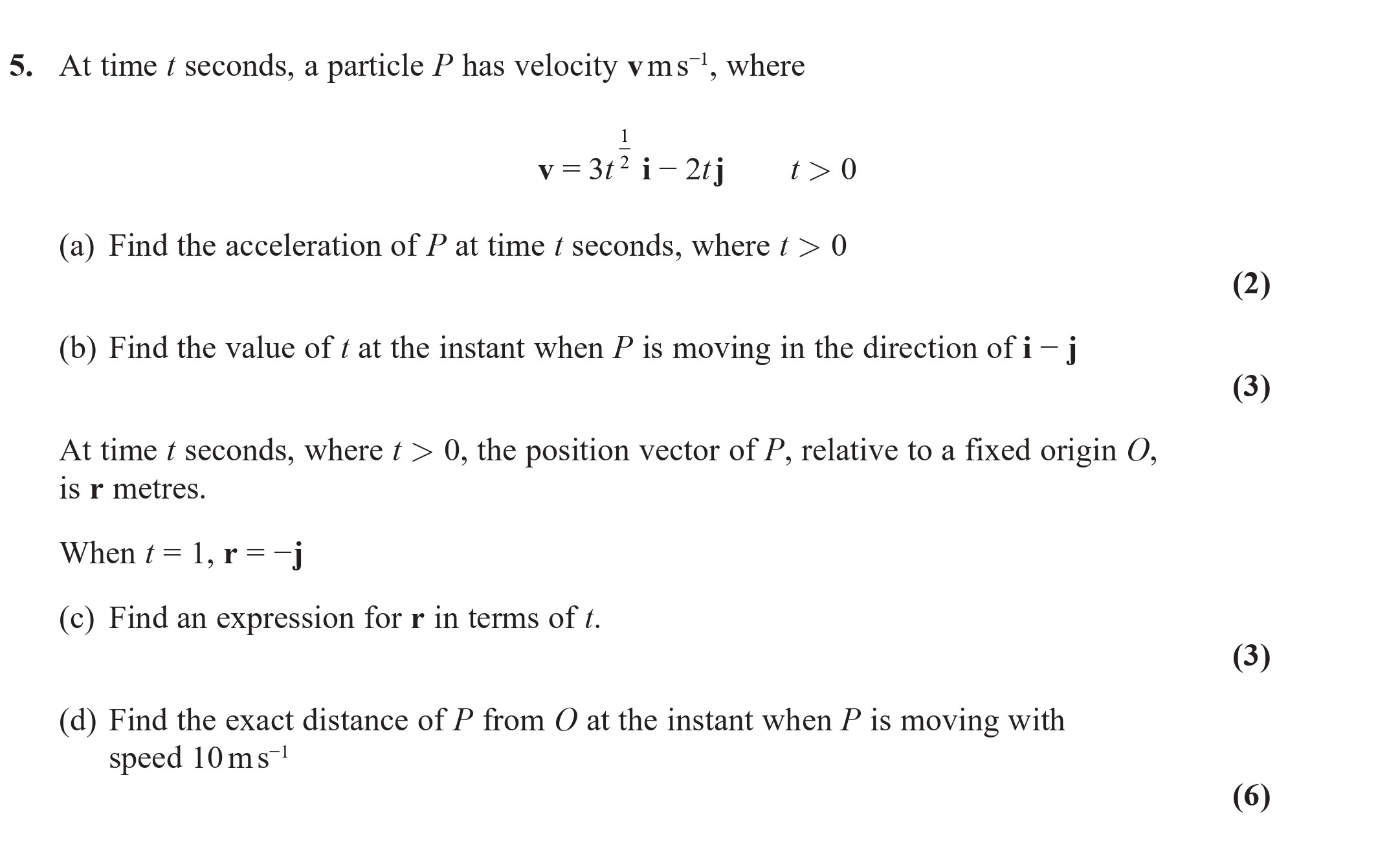Photo AI
At time t seconds, a particle P has velocity v m s⁻¹, where v = 3t²i - 2j, t > 0 (a) Find the acceleration of P at time t seconds, where t > 0 - Edexcel - A-Level Maths Mechanics - Question 5 - 2021 - Paper 1
Question 5

At time t seconds, a particle P has velocity v m s⁻¹, where v = 3t²i - 2j, t > 0 (a) Find the acceleration of P at time t seconds, where t > 0. (b) Find the valu... show full transcript
Worked Solution & Example Answer:At time t seconds, a particle P has velocity v m s⁻¹, where v = 3t²i - 2j, t > 0 (a) Find the acceleration of P at time t seconds, where t > 0 - Edexcel - A-Level Maths Mechanics - Question 5 - 2021 - Paper 1
Step 1
Step 2
Find the value of t at the instant when P is moving in the direction of i - j.
Answer
To determine when P is moving in the direction of , we must set the direction of the velocity vector equal to that.
The velocity vector is:
This means we must find t such that: rac{3t^2}{-2} = rac{1}{-1}
Cross-multiplying:
Solving for t, t^2 = rac{2}{3}
Taking the square root gives:
oot{2}3}{3}$$Step 3
Find an expression for r in terms of t.
Answer
To find the expression for the position vector r, we need to integrate the velocity function with respect to time.
The velocity is:
Integrating gives: r = rac{3}{3}t^3 extbf{i} - 2t extbf{j} + C
Given the condition when t = 1, r = - extbf{j}, we substitute:
This results in:
Thus:
Step 4
Find the exact distance of P from O at the instant when P is moving with speed 10 m s⁻¹.
Answer
To find the speed, we first calculate the magnitude of the velocity vector:
Using the previous expression for v at any t:
Magnitude of v:
ightarrow ext{ Calculation: }$$ $$|v| = ext{√}((3t^2)^2 + (-2)^2) = ext{√}(9t^4 + 4)$$ Setting this equal to 10 and solving gives: $$ ext{√}(9t^4 + 4) = 10$$ Squaring both sides: $$9t^4 + 4 = 100$$ $$9t^4 = 96$$ $$t^4 = rac{96}{9} = rac{32}{3}$$ $$t = oot{4}{( rac{32}{3})}$$ To find r at this t, substitute back into the expression for r we derived above and calculate the distance using: $$ ext{distance} = ext{√}((x)^2 + (y)^2)$$.